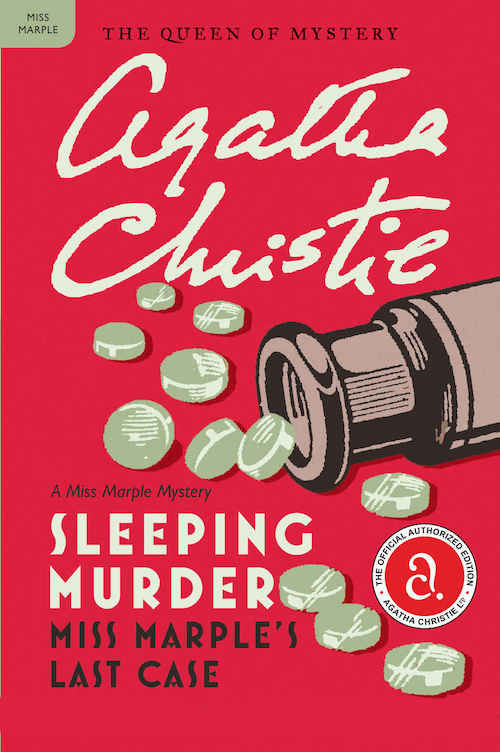
Here we are at the end of the twelve Miss Marple novels!
They were all greatly entertaining, complex and original ~ showing why she is the master of the mystery genre, and the best selling novelist of all time. And Then There Were None became the best selling mystery ever, as well as one of the best selling books of all time. Her sixth book, The Murder of Roger Ackroyd (1926) was voted the best crime novel ever.
Jane Marple is an observant "old pussy" who has an eye for character and a flair for justice. "I would not set myself up as a good judge of people", said Miss Marple. "I would only say that certain people remind me of other certain people that I have known, and therefore I can presuppose a certain likeness between the way they would act". Such is her subtle way of sleuthing, overhearing gossip, listening to family histories and paying attention to what has actually happened rather than what is being said. Each mystery revolves around a puzzle that was not only original when it was published over her 55 year career, but remain unmatched today.
Sleeping Murder has an interesting history. It was the second Marple novel, written around 1940 after Murder in the Vicarage. Whether she feared for her safety during the war, or just wanted a fitting end to her character, the finished novel was sealed away in a bank vault to be published after her death. The rights to the story were also transferred to her husband. It was posthumously published in 1976, and while an interesting mystery, I didn't feel it was as good of a final wrap up for the character as her 'last written' Marple novel Nemesis. Since it was written earlier, there are some oddities, such as Colonel Bantry being about (he was dead by The Mirror Crack'd), and Marple's ability to remain gardening while she didn't have the energy in the last 4 or 5 books. Not to mention using the N word in chapter six, something done in 1940, but probably not in 1976.
Gwenda Reed finds a house to buy with her husband in seaside Dillmouth, he will join her later. They have moved to England from New Zealand. Looking to make changes, she decides one room should have flowered paper, only to find underneath the paint, there once was flowered paper. She also feels like a door should connect two rooms, and some garden stairs should be moved - only to find there once was a door there, and the stairs used to be where she would like them now. Thinking she is going crazy, she then has a vision of a strangled woman in the front hall, the murderer with glistening 'monkey paws' standing over her. She has never been to England - what is happening? She confides in her friend, the wife of Raymond West, who invites his aunt Jane Marple to visit the couple. Marple stays in Dillmouth a while and chats up the local shopkeepers and gardeners, digging up buried family history.
Gwewnda, Giles, and Marple do uncover a twenty year old murder mystery, a "murder in retrospect".
A local woman named Helen had gone off to India to wed, and had fallen in love on the crossing. Telling her fiancé she couldn't marry him, she returned to England, only to fall in love with another man on the return boat. She did end up marrying and living in Dillmouth, but there are plenty of jilted suitors. Shortly, there is the strangling death of a former maid, brandy poisonings, suicide in the sanatorium, and skeletons in the garden. Gwenda also finds the strangled woman was her stepmother! For once, Marple is suggesting they might just let sleeping murder lie.
I have seen this story done for TV and it was interesting to read it knowing who the killer was. I can see how she adds layer to layer of story, branching off into details character histories - about everyone except the killer. The proverbial garden path.
It was an interesting case, but I wished I had read it right after Vicarage, going by the time it was written and not published. Nemesis to me was the better finale for Jane Marple.
1940 / Tradeback / 237 pages


댓글